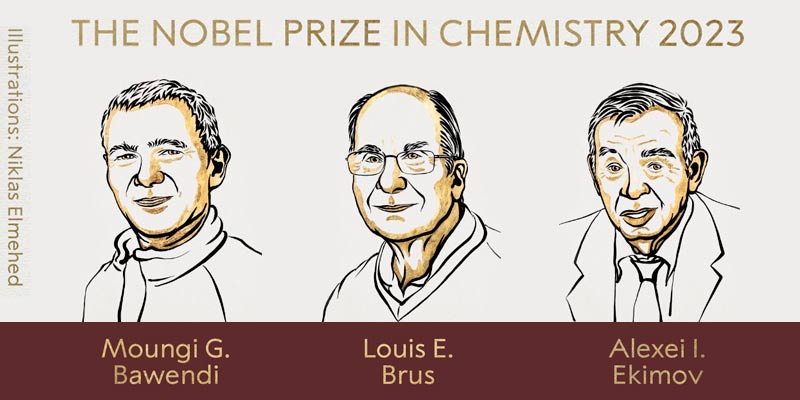- World
- Oct 04
3 scientists win Nobel Prize in Chemistry for work on quantum dots
• The Nobel Prize in Chemistry has been awarded to Moungi Bawendi, Louis Brus and Alexei Ekimov for their work on tiny quantum dots.
• Moungi Bawendi, born in 1961 in Paris, is a professor at the Massachusetts Institute of Technology (MIT), US.
• Louis Brus, born in 1943 in Cleveland, is professor emeritus at Columbia University.
• Alexei Ekimov, born in 1945 in the former USSR, was former chief scientist at Nanocrystals Technology Inc., New York.
• Last year, Americans Carolyn Bertozzi and Barry Sharpless, and Danish scientist Morten Meldal were jointly awarded the Nobel Prize in Chemistry for developing a way of snapping molecules together that can be used to explore cells, map DNA and design drugs that can target diseases such as cancer more precisely.
Quantum dots are of great importance in nanotechnology
• Everyone who studies chemistry learns that an element’s properties are governed by how many electrons it has. However, when matter shrinks to nano-dimensions quantum phenomena arise, these are governed by the size of the matter.
• These three Nobel laureates have succeeded in producing particles so small that their properties are determined by quantum phenomena. The particles, which are called quantum dots, are now of great importance in nanotechnology.
• Physicists had long known that in theory size-dependent quantum effects could arise in nanoparticles, but at that time it was almost impossible to sculpt in nano dimensions. Therefore, few people believed that this knowledge would be put to practical use.
• However, in the early 1980s, Alexei Ekimov succeeded in creating size-dependent quantum effects in coloured glass. The colour came from nanoparticles of copper chloride and Ekimov demonstrated that the particle size affected the colour of the glass via quantum effects.
• A few years later, Louis Brus was the first scientist in the world to prove size-dependent quantum effects in particles floating freely in a fluid.
• In 1993, Moungi Bawendi revolutionised the chemical production of quantum dots, resulting in almost perfect particles. This high quality was necessary for them to be utilised in applications.
• Quantum dots now illuminate computer monitors and television screens based on QLED technology. They also add nuance to the light of some LED lamps, and biochemists and doctors use them to map biological tissue.
• Quantum dots are thus bringing the greatest benefit to humankind. Researchers believe that in the future they could contribute to flexible electronics, tiny sensors, thinner solar cells and encrypted quantum communication, so we have just started exploring the potential of these tiny particles.
Manorama Yearbook app is now available on Google Play Store and iOS App Store

